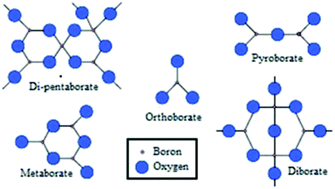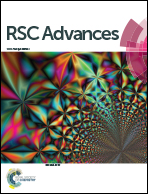A review of the structures of oxide glasses by Raman spectroscopy
Abstract
The family of oxide glasses is very wide and it is continuously developing. The rapid development of advanced and innovative glasses is under progress. Oxide glasses have a variety of applications in articles for daily use as well as in advanced technological fields such as X-ray protection, fibre glasses, optical instruments and lab glassware. Oxide glasses basically consist of network formers, such as borate, silicate, phosphate, borosilicate, borophosphate, and network modifiers such as alkali, alkaline earth and transition metals. In the present review article, Raman spectroscopy results for the structures of borate, silicate, phosphate, borosilicate, borophosphate, aluminosilicate, phosphosilicate, alumino-borosilicate and tellurite glasses are summarized.


 Please wait while we load your content...
Please wait while we load your content...